The Weaver’s Dance
Photos that meditate on the link between fabric and movement in India’s textile and dance traditions.

Interview by Karolle Rabarison
The Morning News: The “Dance of the Weave” exhibition at Vadhera features photographs that will appear in your forthcoming book of the same name. Describe the field work that went into compiling the book.
Briana Blasko: I have been working as a photographer for 13 years with a specialization in dance photography for the past 9 years. Frequent trips to India since 2003 have informed the conception of this book project through a deep appreciation for the arts and crafts of Indian textiles and dance. For over three and half years, I visited dance schools and festivals across India to research various forms of classical, folk, and tribal dances. Simultaneously, I visited weaving villages in these states to document the costumes and textiles used by the dancers.
Dance research for the project was conducted in eight Indian states: Orissa, Andhra Pradesh, Tamil Nadu, Kerala, Uttar Pradesh, Manipur, West Bengal, Jharkhand, and Assam. Textile research began in collaboration with the Upasana Design Studio in 2008 and then continued with dance costume designer Sandhya Raman and Amba Sanyal in New Delhi. This process consisted of constant collaboration among leading dance-institute professionals and local dancers, weavers, and villages. Continue reading ↓
“Dance of the Weave” is on view at New Delhi’s Vadhera Art Gallery through Jan. 16, 2013. Images used with permission. All images © copyright the artist, all rights reserved.
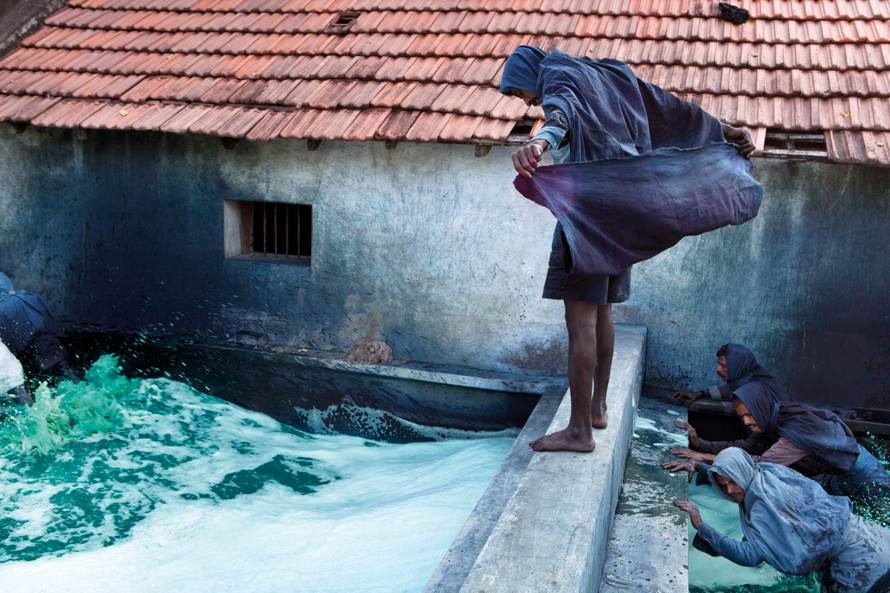
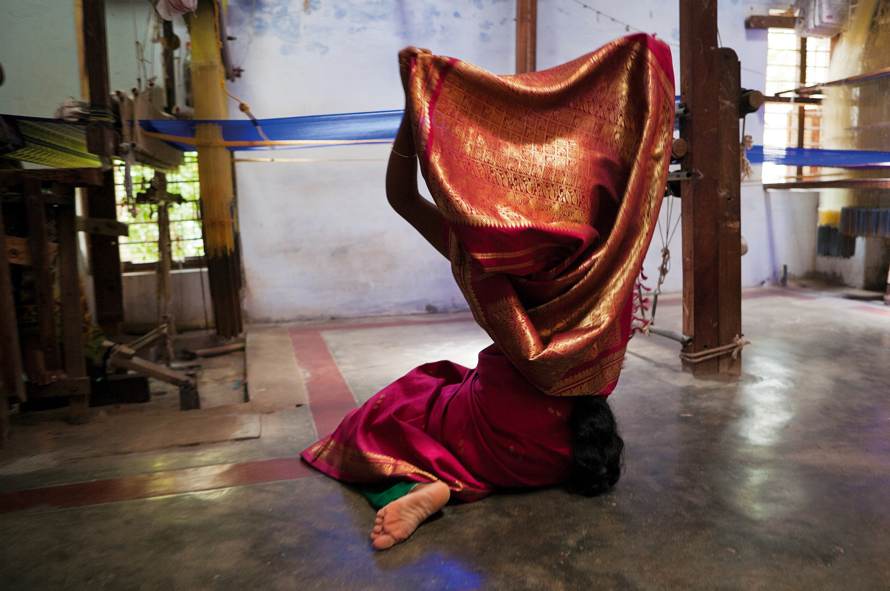
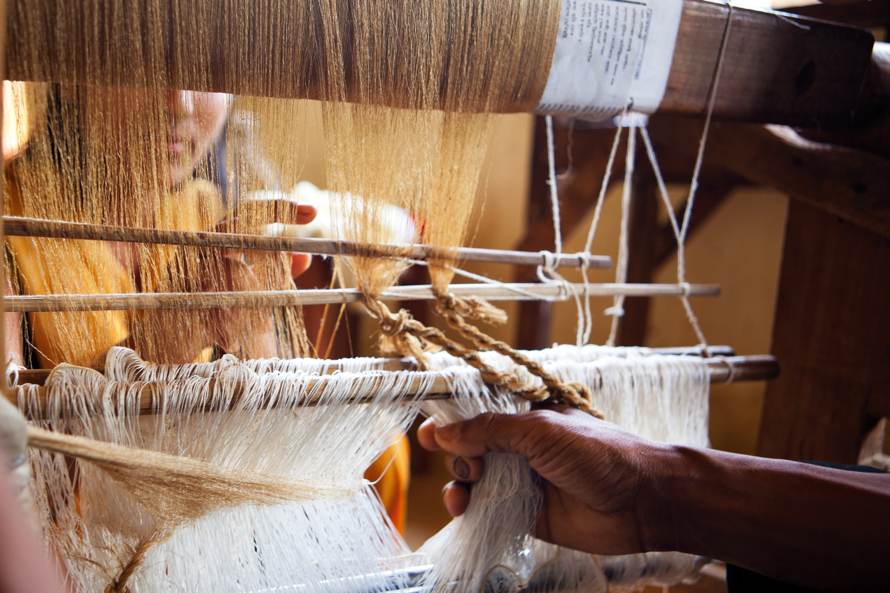
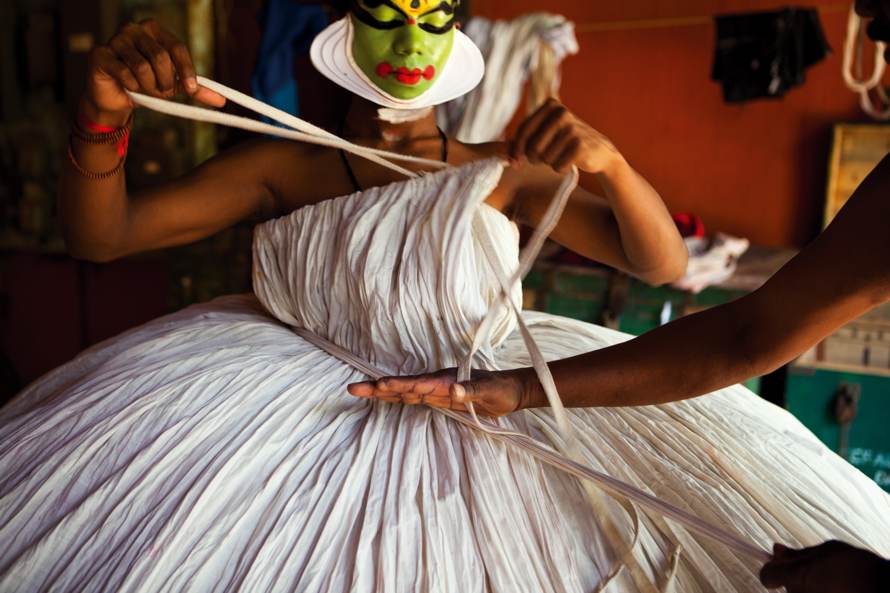
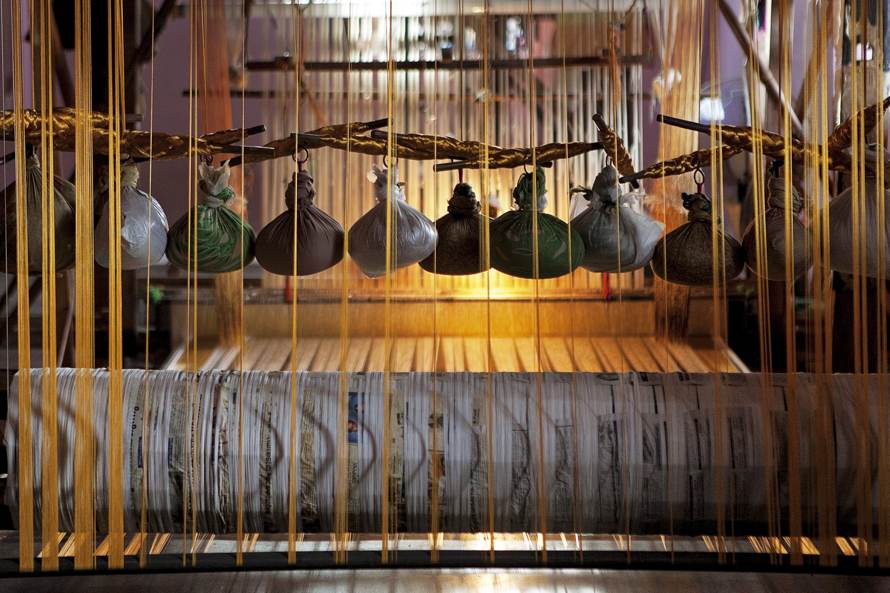
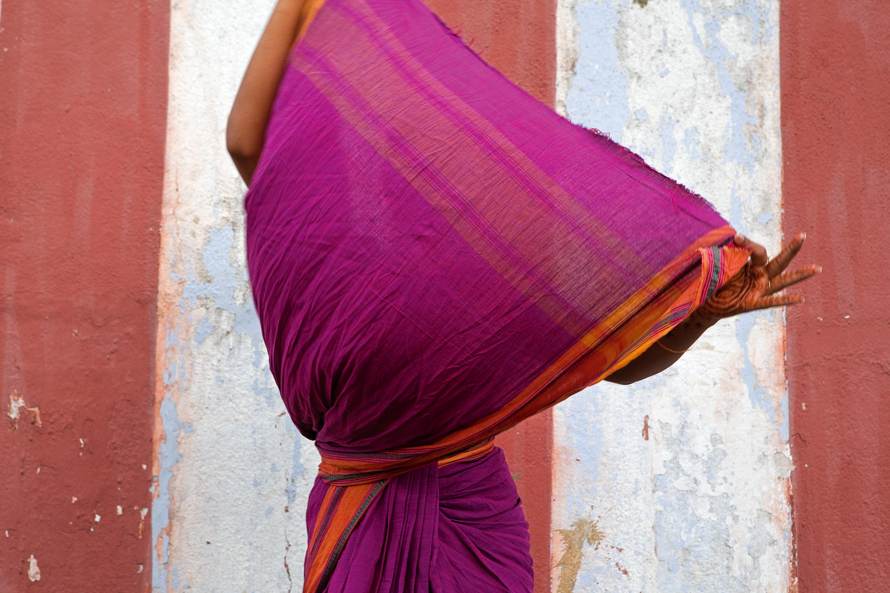
Interview continued
TMN: Do you yourself practice dance?
BB: No. But I practice Asthanga Yoga, as taught by the late Sri K. Pattabhi Jois from Mysore, India.
TMN: How did you gain access to so many communities?
BB: Many, many people collaborated and assisted in this research. Dance institutes like Sangeet Natak Academy and Kalakshetra were immensely helpful. Other leading dance institutes were also instrumental in my research: Kalamandalam University Kerala, Uttar Kamalabari Satra Majuli, Jawaharlal Nehru Manipuri Dance Academy, Benares Hindu University, Seraikella Chhau Academy, Royal Chhou Academy Balarampur, Baripada School for Chhau, and CVN Kalari Calicut and Trivandrum. The Craft Council of India as well as weaver service centers across India were amazing resources. Countless dancers, weavers, and professional working in these fields have also guided me.
TMN: In several photographs, the dancer’s face is not visible. Was it your choice to hide the faces, or did the dancers wish to remain anonymous?
BB: My focus is mostly on the expressions of the dancer’s body and the textile or costume. In each photo session I explore how a dancer inhabits the textile and plays with fabric through movement. I did not make an emphasis on the jewelry, make-up, flowers, or any other adornment that is often essential to a dancer’s presence while performing on stage for an audience. By highlighting the drapes that are used in dance, I showed how the way a single piece of cloth is used is still relevant in India. The photographs celebrate textiles as they do the aesthetic of those who wear them.
TMN: Any region that particularly fascinates you for its traditions?
BB: I have really enjoyed documenting weaving traditions in the northeast, especially in Assam (Muga Silk) and Manipur (Inaphi Jamdani).
TMN: What do you miss most about New York City, if anything?
BB: I miss my family and friends.
